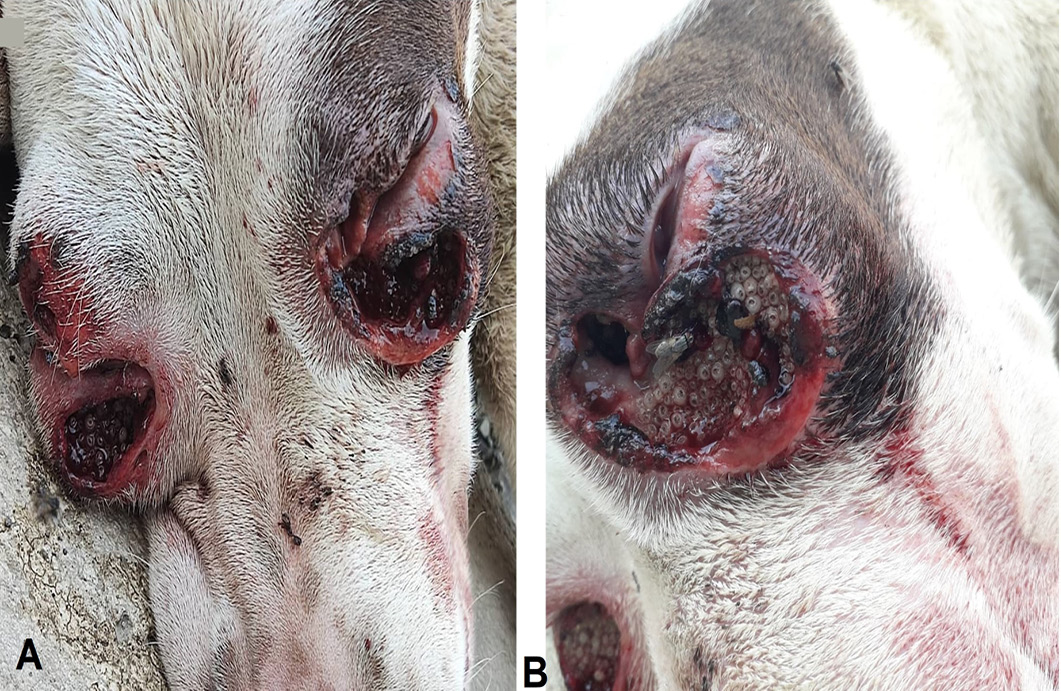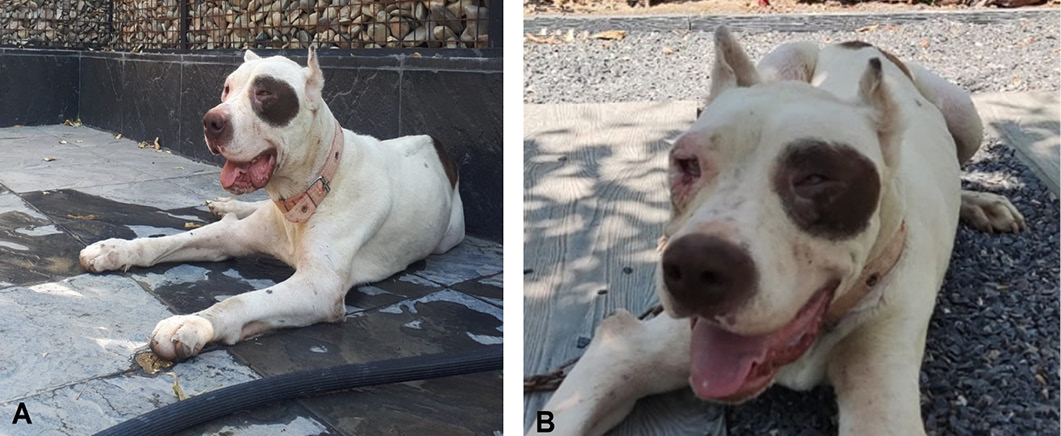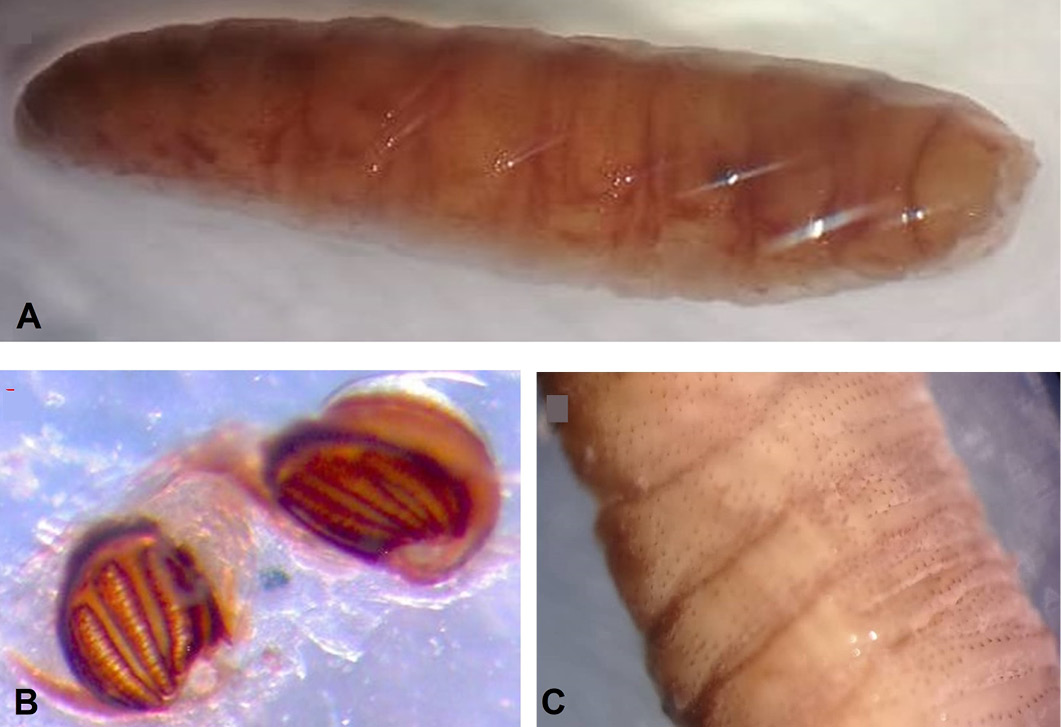Bilateral Orbital Myiasis Due to Wohlfahrtia magnifica and its Treatment in a Dog
Bilateral Orbital Myiasis Due to Wohlfahrtia magnifica and its Treatment in a Dog
Amir Masoud Jafari-Nozad1*, Keyvan Samadi2, Kamran Akbarzadeh3, Hasan Bakhshi4*, Kourosh Arzamani4 and Amirsajad Jafari5
Clinical manifestation of orbital myiasis in an anesthetized Pitbull dog before treatment (A and B).
Improvements in animal’s condition after three weeks of treatment.
Identification of larvae by morphological keys. (A) larvae, (B) spiracles in the cavity of posterior part, (C) scattered stout spines on the body surface.










